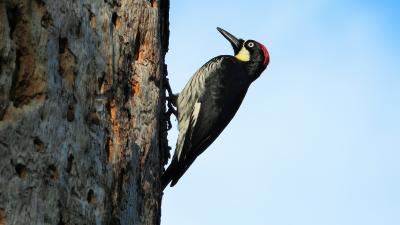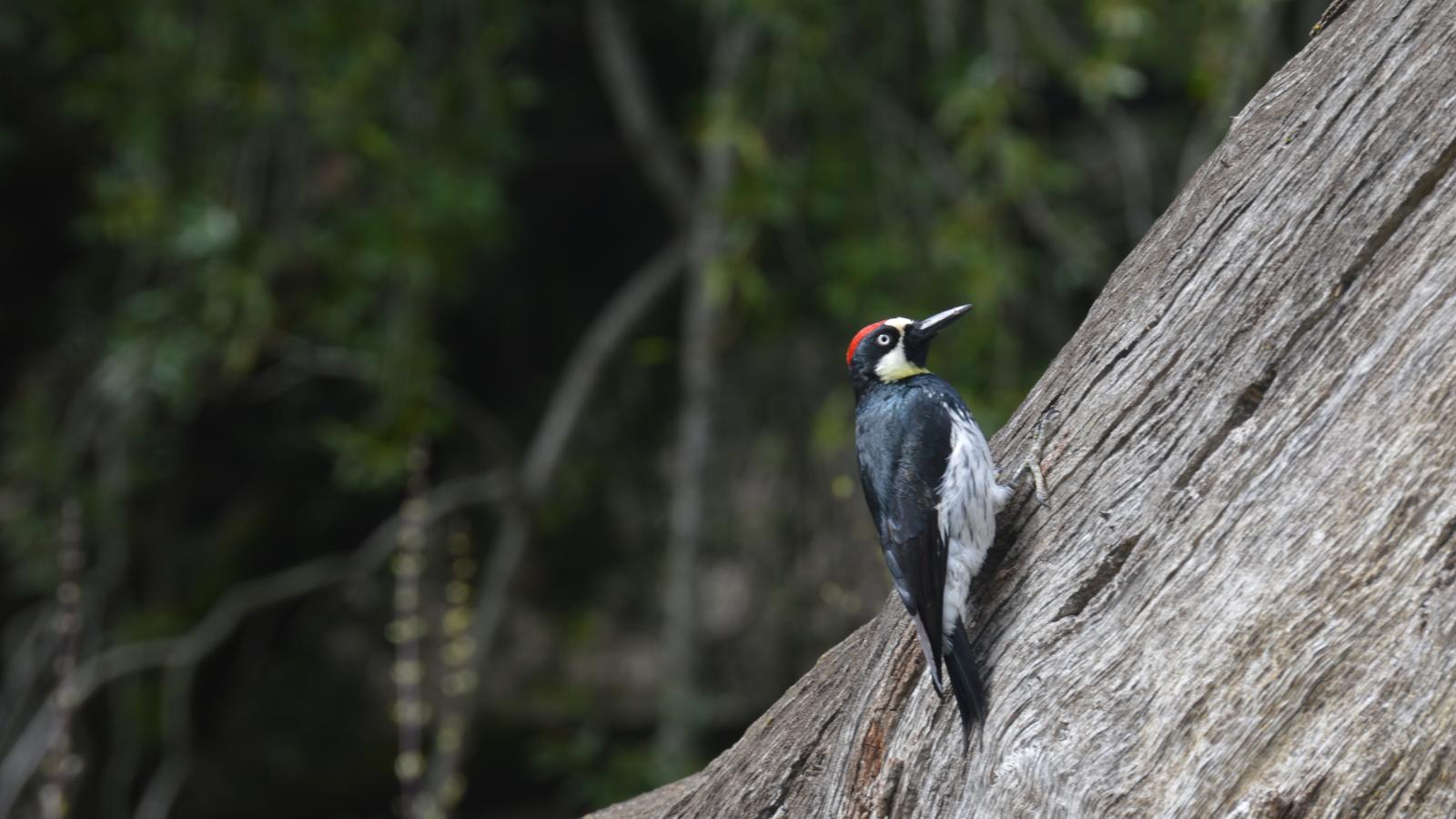Acorn woodpeckers (Melanerpes formicivorus) exhibit some of the coolest, and most complex social behavior in the animal kingdom. These unusual birds live in family groups, made up of 2-15 adults who breed and raise chicks together cooperatively.
The group is composed of three types of members: breeding males that are all related to each other, breeding females that are related to each other but not to the males (to prevent inbreeding), and nonbreeding adult children. The breeding females will mate with any of the breeding males — this system is called "polygynandry." Importantly, the females in the group cannot tell which offspring are theirs. In fact, they will take violent steps, such as destroying the eggs of a bird that laid earlier than everyone else, to ensure that their eggs are a part of the communal clutch and that no bird's eggs receive preferential treatment.
As their name suggests, these woodpeckers depend heavily on acorns for food, though they do also feed on insects, sap, and fruit when available. Acorn woodpeckers spend the fall harvesting and storing acorns in their family group’s “granary” – a pantry made up of up to 50,000 holes drilled into either dead trees, or the thick bark of living trees like redwoods or ponderosa pines. These storage facilities are built and maintained over many generations. Granary maintenance is a full-time job.
These woodpeckers spend much of their day moving up and down the trunk of the tree and tapping the acorns into their holes as they go. If an acorn comes loose, they will move it to another, smaller hole. These granary stores help the flock survive in harsh times.


